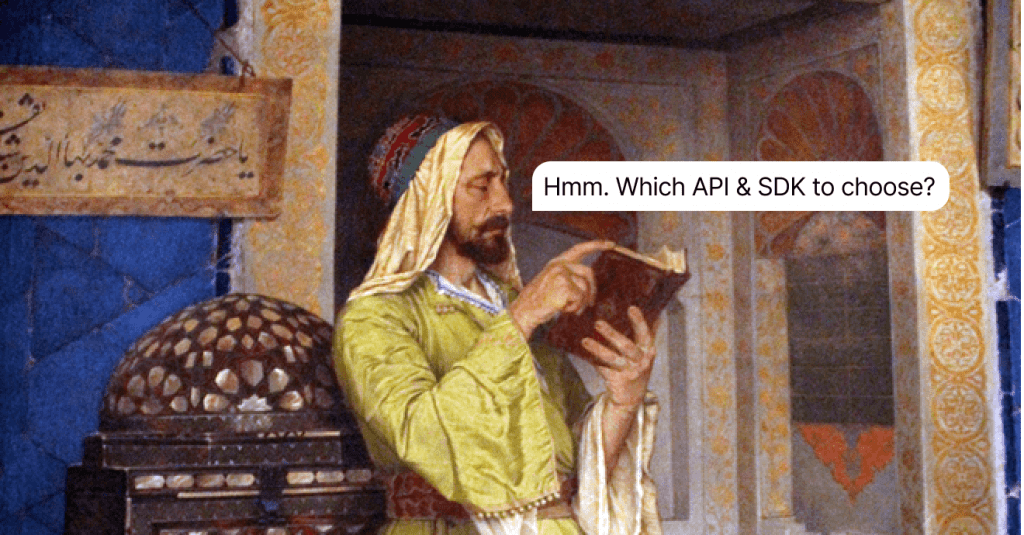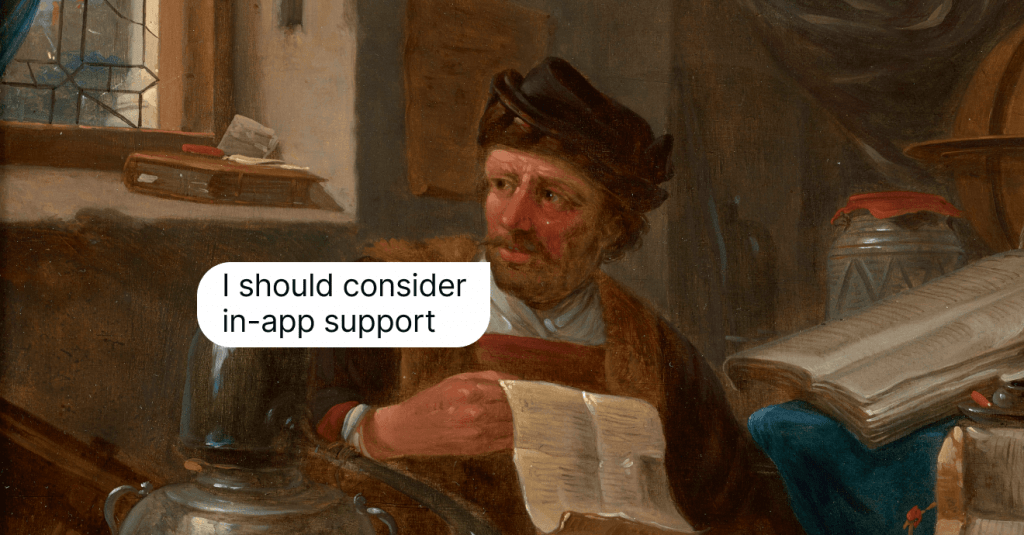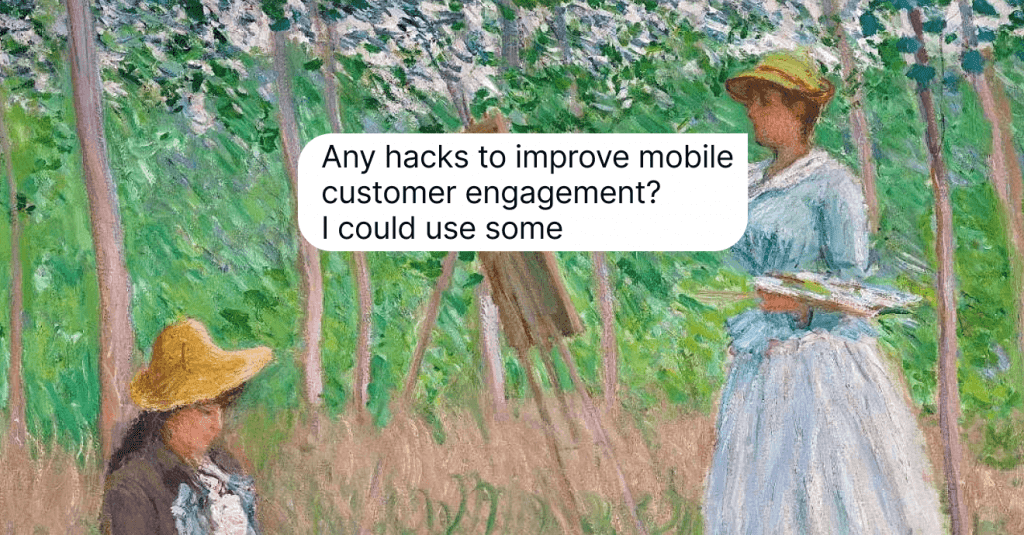In-App Notifications vs. Push Notifications: Can You Tell the Difference?
In-app messaging vs. push notifications – we tell what they have in common. Step in!
Written by Olesia Melnichenko

How to get through to mobile app users? Sadly, you can’t take a megaphone to convey a message to them 📢 What about emails? They could save the day for a change. However, you have to know the ropes of email marketing techniques at least, analyze your audience, hit those letters on the right day, and things like that.
I see a better and faster way: in-app notifications 📲 Mobile app messaging allows businesses to keep customers informed and engaged with real-time updates.
Everybody heard about the push notification vs in-app notification fight. There are several notions about them. The first one is that those two aspects are like two peas in a pod. Tomahto, tomato, right. The second one, though, is what we will talk about today – their difference.
The definitions, notification types, and major use cases – everything you need to know before starting your mobile communication adventure are here. Step in!
Push notifications vs in-app messaging: comparison chart
If you’re the have-it-all immediately kind of reader, we’ve got you covered. Here is a quick comparison table where you can glance through the key in-app notifications vs push notifications discrepancies. Which one would you leverage in your mobile communications? 📲
| In-app notifications | Push notifications | |
|---|---|---|
| Target audience | Users who are active in an application | Users who are not currently engaged in the app |
| Key goal | Educate customers, point them in the right direction | Reengage with a customer, have them come back after their absence |
| Main working principle | Pop up when a user is in the app | Pop up when a user doesn’t have the app open (mainly on the lock screen) |
| Disabling possibilities | Can not be switched off | Can be switched off if need be |
In-app messaging vs. push notifications: covering the main differences

As the name implies, in-app messaging offers precise targeting of users and shows up when a person is currently active in an application. Their nature is to guide them across the app and help them stay within the context – user onboarding, advanced features adoption, etc.
In short, messages to users inside the app encourage a customer to take action (click the message at the very least). It all boils down to its text. Compare these two options (spoiler alert: the 2nd one wins):
- Here is a Premium feature. Go check it
- You’ve just unlocked the Premium feature! Now, you can do so much more with the app. Care to discover the details?
Important! When considering in-app notifications, app development decisions should prioritize user preferences and engagement above all to ensure a seamless and user-friendly experience.
Push notifications, in contrast, are designed to meet the eye of those who put an app on the back burner. They are mainly short (e.g. tooltips) and not only aim at immediate actions but also provide a customer with relevant and specific information – a new message, feature launch, app announcement, account ongoing activities, etc.
When to send them? Frankly speaking, it depends. Given that push and in-app notifications are usually conceived as one strong unit, the time could be the same, too. According to this industry breakdown, if you’re a news vendor, shoot your announcement either at 10-12 or 15 p.m. But for those who deal with traveling, the peak time to do that would be 9 p.m.
And one more side note! Both a push notification and an in-app message can take place on a website and mobile to help you reach business success.
Note! What types of in-app messages do you know? Off the top of my head, there are tooltips, chatbots, slideouts, product tours, and modals (aka popups). Clearly, you won’t be empty-handed at HelpCrunch – a full-house customer communication platform. It can provide you with auto messages and a popup builder. Both are highly customizable. Just sign up for a free 14-day trial and test those in-app messages.
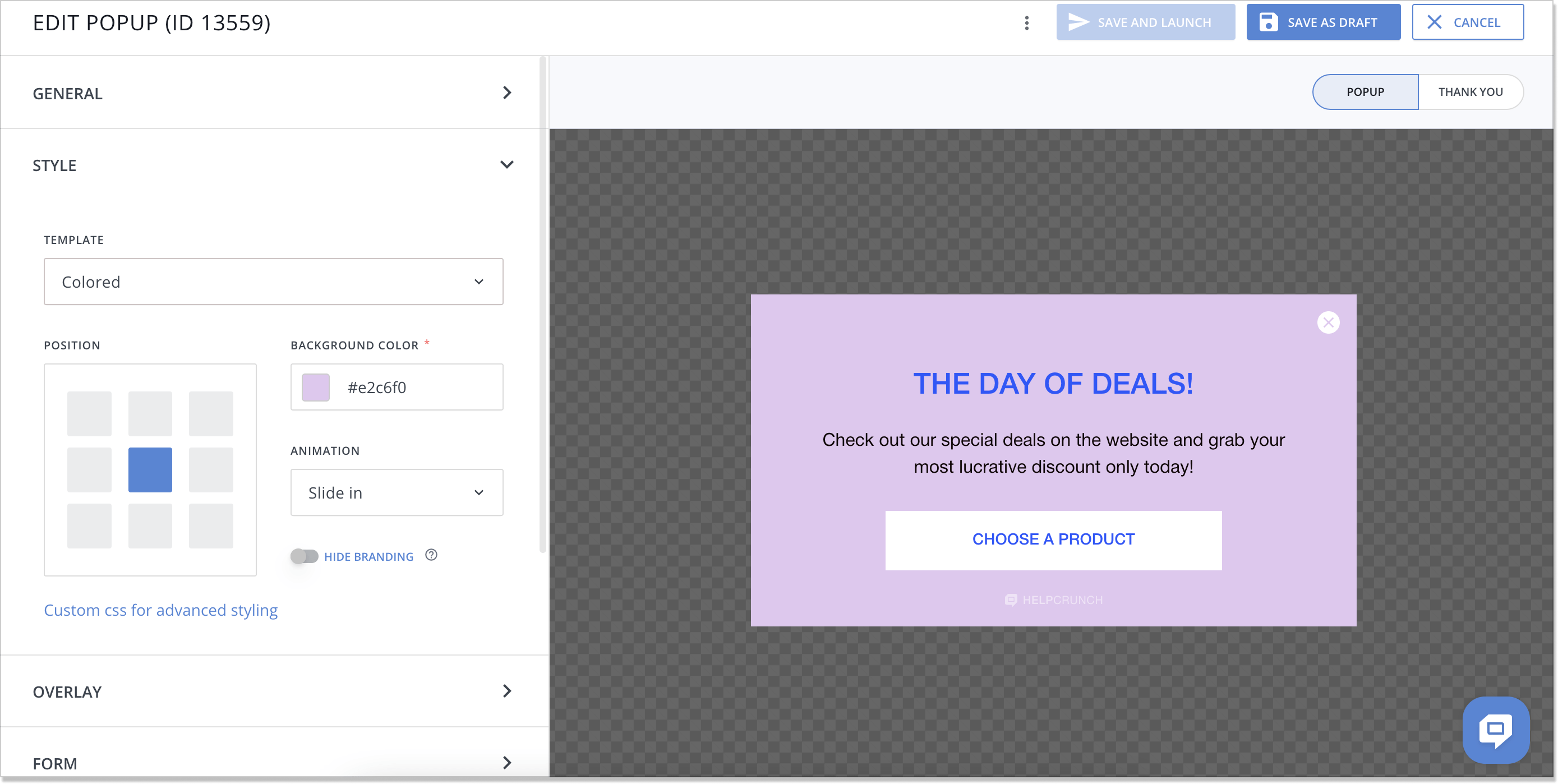
In-app notifications vs push notifications use cases
Before you set off on your mobile communication journey, you’d better figure out the best scenario to send an in-app or push notification to users. With that in mind, we’ve highlighted the use cases for each of them.
First up – in-app messages 👇🏻
-
Product tours during onboarding
What’s the greatest way to educate a newcomer about your product or service? That’s right: showing them elegant messages or pointers every step of the way. With that, you have to worry about neither excessive customer requests nor chaos in your inbox – users will be able to travel this path on their own, no questions asked. With your help, sure thing.
Here is a perfect example. There is a product walkthrough that includes not only text but also a real person picture, which only adds to the authenticity. Such in-app notifications appear during the whole product adoption process, making the learning curve not so steep: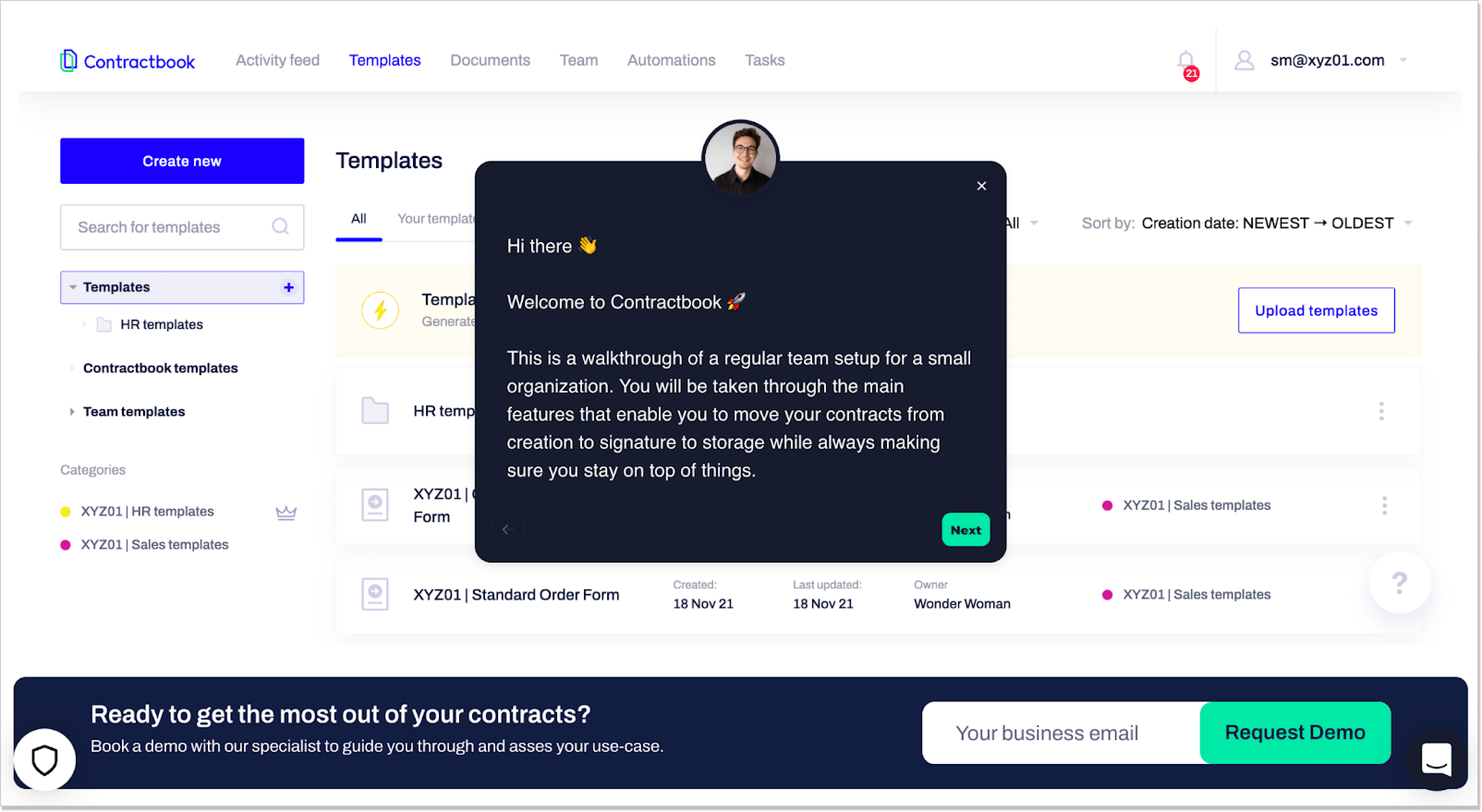
The Complete Guide to Product Tours and Walkthroughs
Remember one simple rule when creating an in-app message for customer onboarding: walls of text are hard to digest, so you might want to keep those posts up to the point.
-
Contextual updates
If you ask me, I would say that providing a client with context is equally possible in the in-app messaging vs. push notifications clash. The question is which one would be best suited for this task? From my perspective, the former IS our candidate.
What’s so special about contextual announcements? I think the name suggests it: they should be as relevant as possible for a customer. Here is how Skyscanner reaches out to clients based on user behavior. It pops up at the right moment when visitors are looking for an affordable flight price: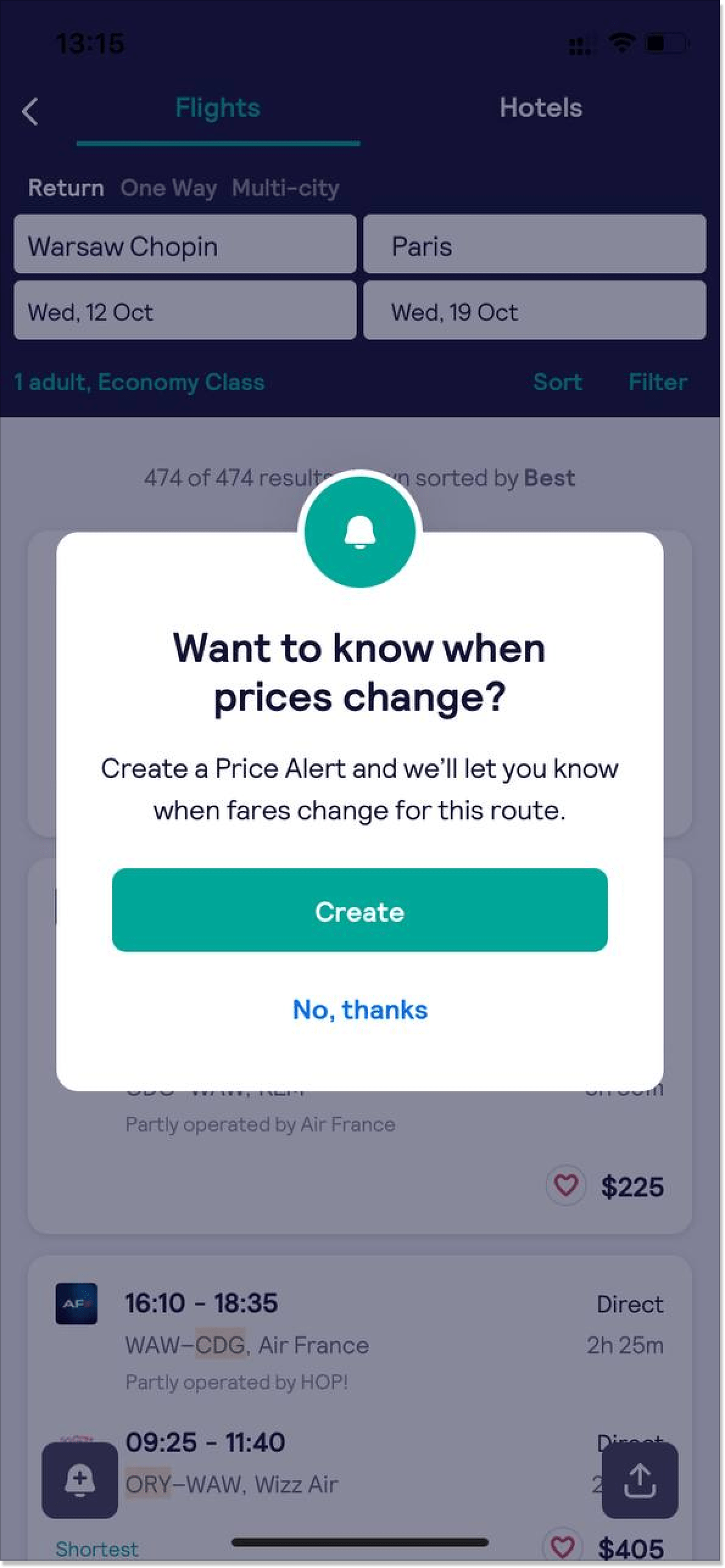
-
Product updates or feature announcements
When your product or service has just undergone a little facelift, you have to scream about it from the rooftops. An excellent way to do just that is, of course, announcing that strictly in your app. However, I am not shrugging off push notifications: they could be an asset as well (but maybe a not-so-obvious one).
So this is how Apple has introduced changes in their Reminders app after the iOS 16 drop-in. No fluff, only major improvements, and quick texts presented in the full-page message to enhance user experience: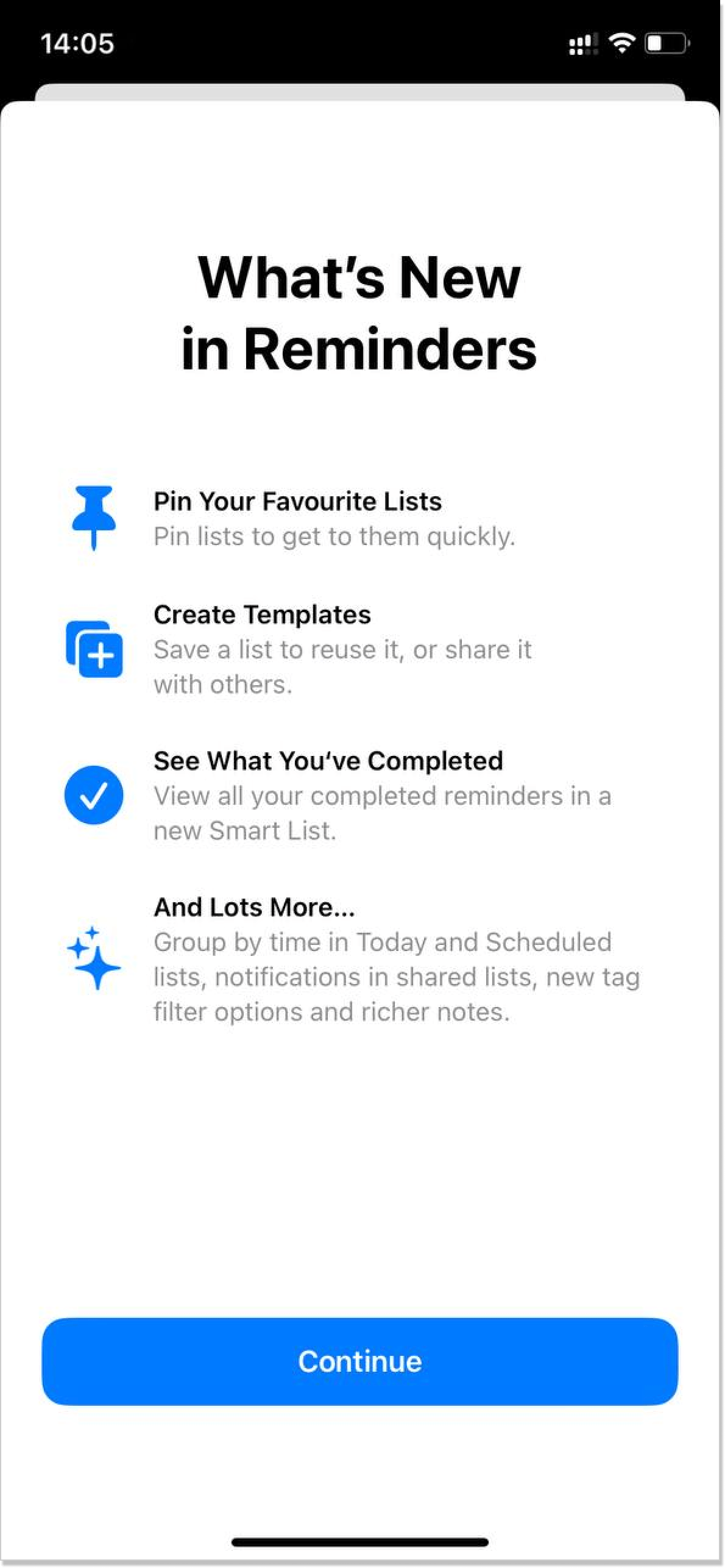
-
Special achievements
Many games, sports, education, and apps send personalized messages. In order to retain users and give them a little nudge to move forward with your product, you can set up an in-app notification recognizing their particular milestones.
Have they passed an extra level, created the 5th playlist in your music app in a row, or added 10 friends to the game? Congratulate them on that with an eye-catching but minimalistic popup in the user interface. This tactic will contribute to better customer loyalty and engagement.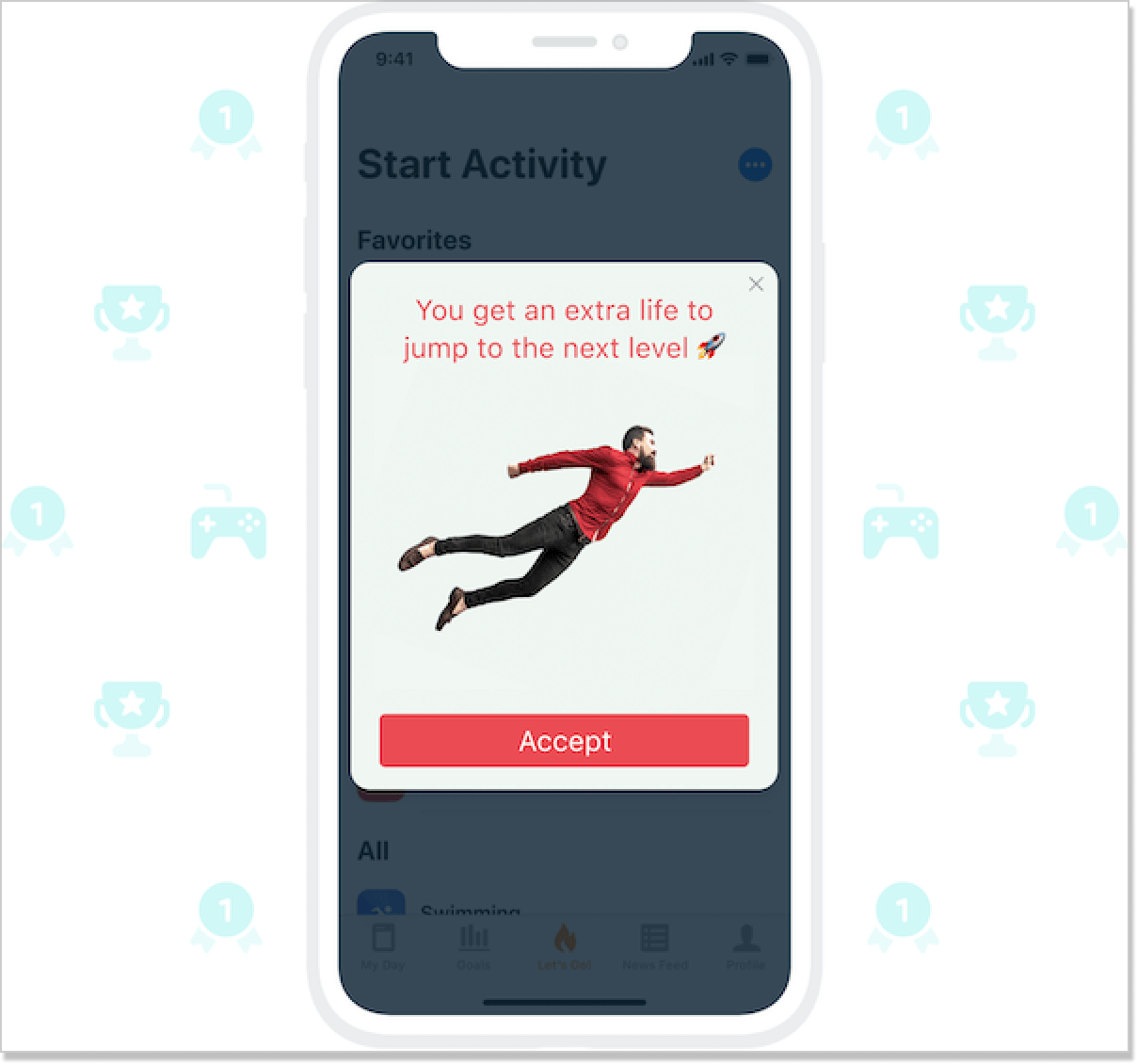
Different in-app messaging use cases
-
Feedback request
If you use email to ask a customer for valuable feedback, the chances are your message will be unseen or sent straight to the Spam folder. But an in-app message could turn the ship around. When set up right, it could get a user interaction going and actually make them FILL IN that opinion survey.
Such feedback requests can be represented in many forms of interactive notifications. An NPS (Net Promoter Score) poll, shake-to-rate, or a one-question survey, etc. – literally, you can use as many as you like. This one, for instance, asks for feedback from users to rate the app experience with stars: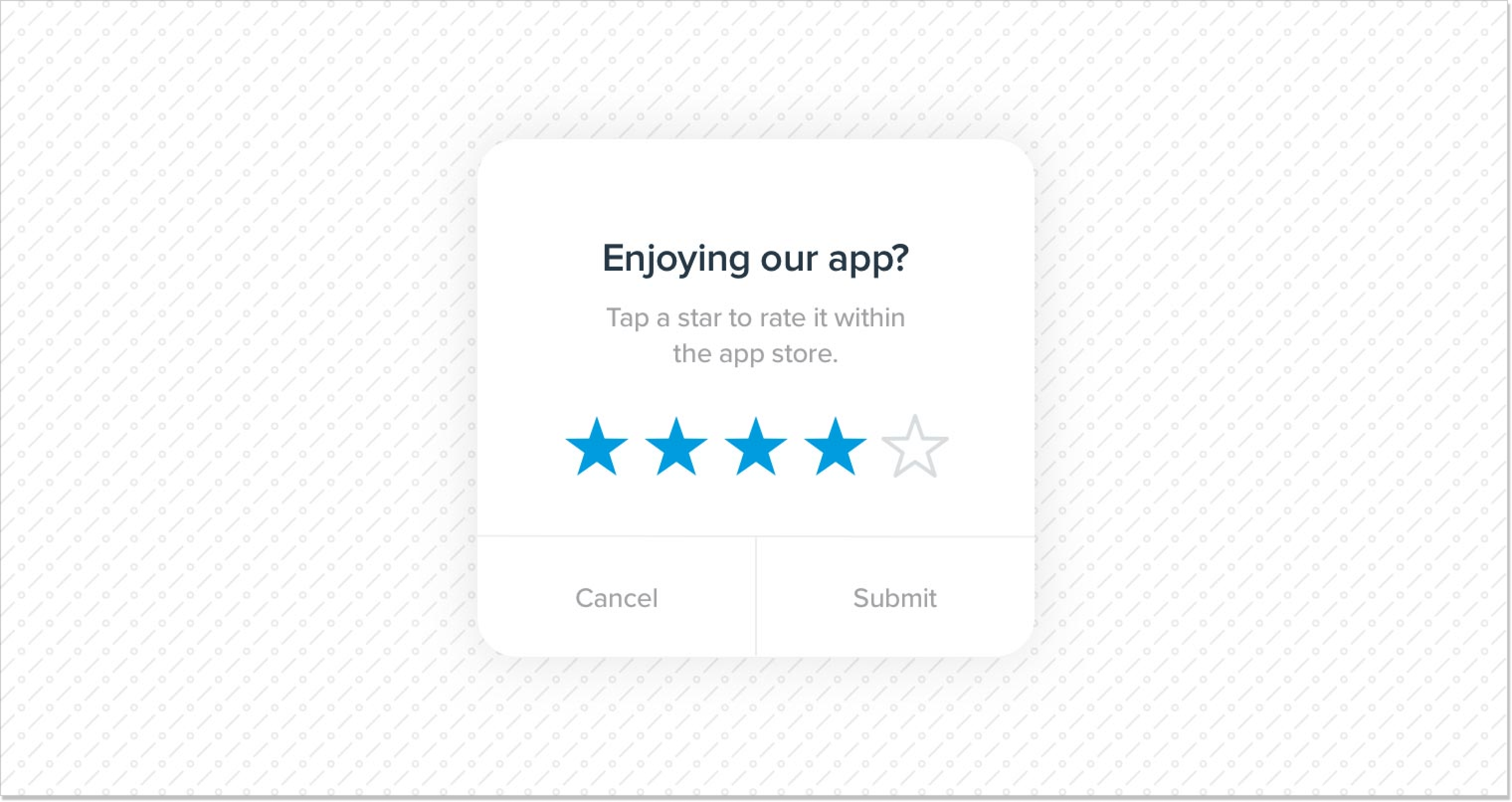
In-app feedback
Alright, it’s push notifications’ turn now! 👇🏻
-
Time-sensitive content
Have you already realized what top-of-mind ability a push notification has? It’s getting into the customers’ ears (or, in our case, the eyes) while they’re outside the app. With just the right settings, you can reach out to your audience to inform them about scheduled appointments, special events, or even a price drop-off for that matter.
And this is when the good old Google Suite enters the play. While I was literally writing this article, I got THE push notification I needed. It reminded me of an upcoming daily meeting with the HelpCrunch team. So I thought, “Well, why not infuse this example into my article?” What a funny coincidence, isn’t it? 😏
-
Re-engagement
When you shape a mobile marketing strategy for your brand, don’t forget to squeeze re-engagement and customer lifetime metrics in. How would you deal with those who forgot about you? What’s the right approach to deal with your disengaged audience? Not by phoning them in despair (but I wouldn’t dump this option either). In the push and in-app notifications to users conundrum, the former usually shows its worth in bringing lapsed customers back.
Take advantage of pushes as a friendly pat on the back. Write heartfelt copy saying you’re waiting for a client to return, add some incentives to the message special trial conditions or product news, for instance, and it’ll work out.
This is how Netflix invites its purchasers back into the app. I would say, the guys played two tricks here: 1) they segmented their audience based on the psychographic data (this push wouldn’t touch the hearts of, let’s say, the Desperate Housewives fans), and 2) they sent it to those who have already watched the series: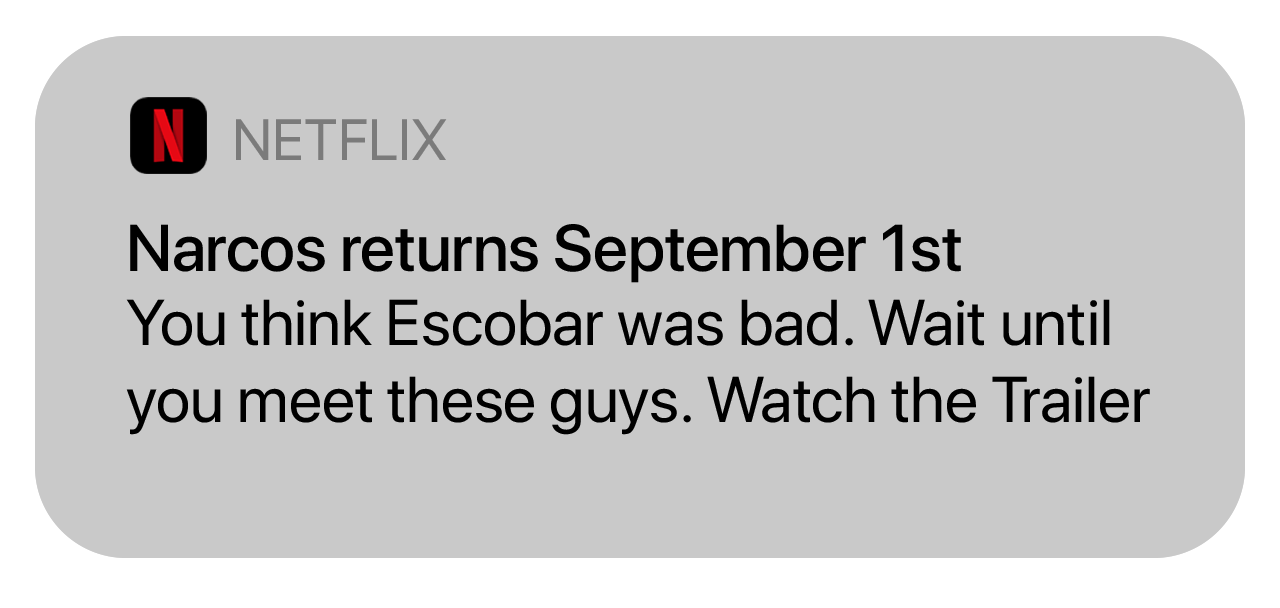
The Essential Guide to Push Notifications
-
App alerts and reminders
Push notifications would be a blessing for those who tend to disregard medicine, especially when it should be taken on a regular basis. Customers will be able to notice the important reminder in their notification tray just in time. Thanks to the era of technology, patients can relax now and set up everything in seconds.
As custom has it, Apple is at the helm here, too. At the touch of a few buttons, you can insert all the information about your prescribed medications, log in their take or skip time, and automatically receive reminders about them. Message delivery in this case is prompt and reliable. Easy as that!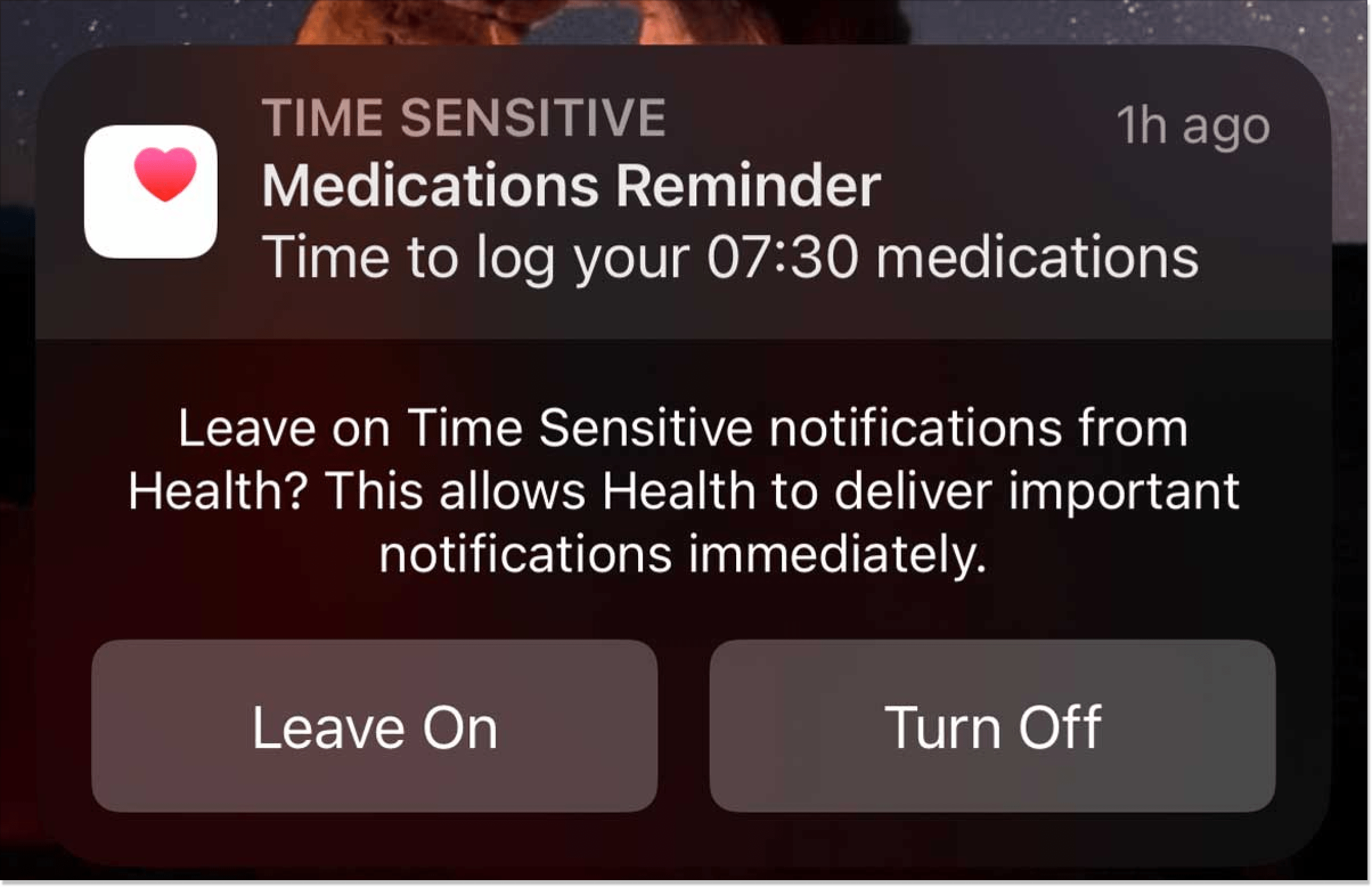
Set up medication reminders on your Apple Watch and iPhone with the Health app
-
Time-limited offers
When we’re talking about a retention push vs in-app notifications fight, both could reel in on a mobile device screen with a special offer or an irresistible discount opportunity. Push messages, for one, are ideal for promotional app marketing campaigns, and app user retention:
– Better outreach – you can get the attention of those who have already used your app before, regardless of their presence;
– Higher ROI – the stats say that push messages can boost the ROI by up to whooping 3500% and user retention rates up to 95%;
– Higher long-term engagement – basically, pushes are call-to-actions by nature, so you can kill the birds with one stone by using those: drive more traffic and skyrocket engagement significantly.
Secret Flying, for instance, sends push notifications once a lucrative flight deal is on. I don’t know about you, but I would head for a vacation should such a message meet my eye: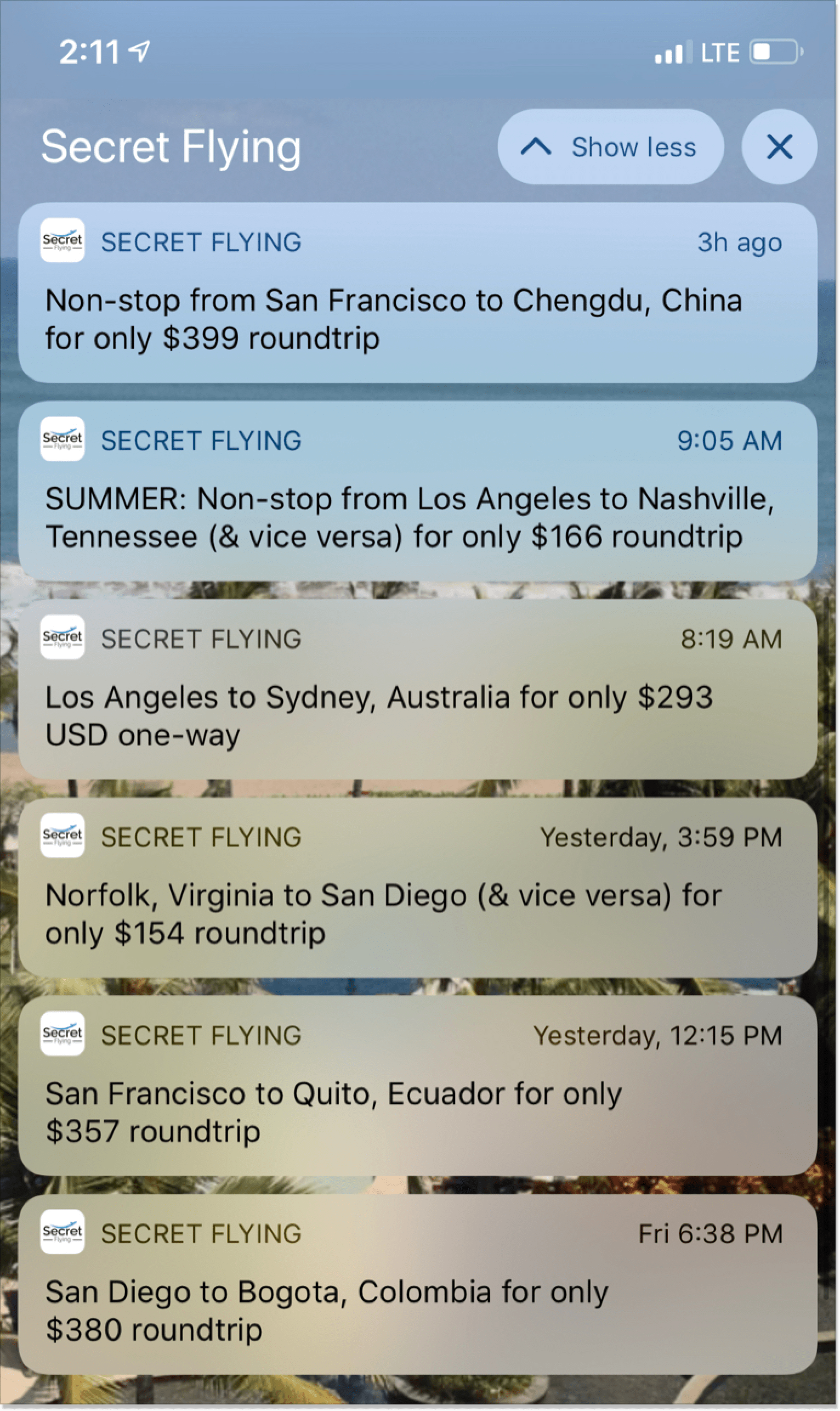
Push notifications from Secret Flying App
Important warning! While sending exciting offers and opportunities to your customers is essential, do not bombard them with pop-up messages, as a person can find it annoying, and remove your app.
-
Shopping cart abandonment
The average user cart abandonment across all industries is nearly 70%. And we all know that this is one hell of a bummer for retailers and ecommerce guys.
What are the reasons for a growing number of disengaged user who leave their carts? Well, it could be some serious dissatisfaction with a product/service or a mere distraction. Anyway, there is a recipe to turn things around and move customers to the next stage of the sales funnel.
As shown in the example provided by Amazon, the push notification carefully reminds a client of an unfinished purchase. The only thing to remember is that you shouldn’t sound too pushy or sales-y. Instead of saying, “What the heck? Your item is waiting for you in the cart, go pay for that“, you’d better use something like “Oops! You might have forgotten about your X item in the cart. It’ll wait for you there!”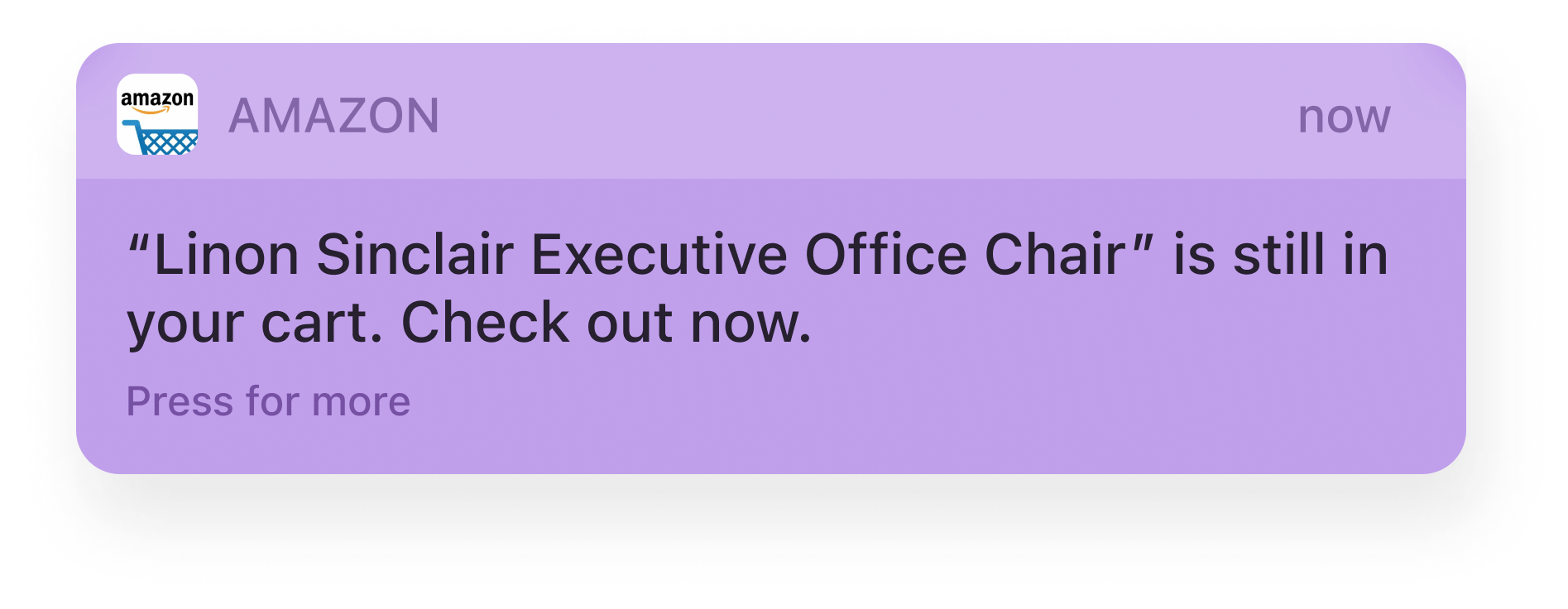
Mobile push notifications example to inspire you
When to use in-app messaging?
It’s essential to know in which cases to use in-app messaging to achieve the highest level of effectiveness. We’ve already discussed some of the use cases in the paragraph above, so now let’s sum them up in a quick list of the most common scenarios for in-app messaging:
- Onboarding new customers. In-app messages can be a great way to welcome newbies to your app and provide them with the necessary information to get started. You can send them messages with step-by-step instructions, checklists, the app’s features, how to use them, and what customers can expect.
- New features promotion. When you add new features to your app, in-app messages can be a perfect channel to let clients know about them. You can also use this tool to promote special offers or discounts related to the new features.
- Re-engaging lapsed customers. If a prospect abandons your app altogether, in-app messages can be a good solution to get them back. You can send them messages about what’s new in the app, or offer a special incentive.
- Celebrating milestones. When a customer reaches a particular milestone in your app, such as completing a level or making a purchase, you can send them a congratulatory message. This is a great way to show appreciation for user engagement and encourage them to continue enjoying your app.
- Collecting feedback. You can collect valuable user feedback through in-app surveys and feedback forms. This helps you understand clients’ needs, preferences, and pain points to improve the final product.
These are just a few of the many ways you can use in-app messaging to engage with your customers and improve their experience. When implemented effectively, in-app messaging can be a powerful tool for driving engagement, retention, and conversion.
When to use push notifications?
Even though push notifications are a different tool than in-app messaging, the use cases for their usage have some similarities. Here’s a guide on when to use push announcements effectively:
- Delivering timely updates or urgent news. This could include things like letting users know that their order is ready for pickup, that there is a security alert in their area, or that there is a new message in their inbox.
- Promoting new features or content. This is a great way to get customers excited about what’s new in your app or website.
- Re-engaging inactive clients. If a customer hasn’t opened your app in a while, you can send them a push notification to remind them about your offer.
- Collecting feedback. You can use this tool to ask customers for feedback on your app or website. This can help you improve the user experience.
- Cross-promoting other products or services. If you have other products or services that you think your clients might be interested in, you can use notifications to promote them.
It’s important to leverage push messages sparingly and only when they are truly relevant to the user. If you send too many of them, or if they are not relevant, customers will start to ignore them. Additionally, allow clients to customize their preferences to tailor their experience.
The choice is yours
I hope we managed to tell the difference between these two awfully similar concepts. How to make the final choice? Well, it all depends on your business goals: do you want to attract inactive clients’ attention? Or is it about dealing with already existing customers?
Both in-app and push notifications are great at what they do: enhancing the user journey. Also, in-app notifications are shaping the landscape of future data-driven decisions for app developers and mobile marketers. So, good luck making the best decision for your company!


